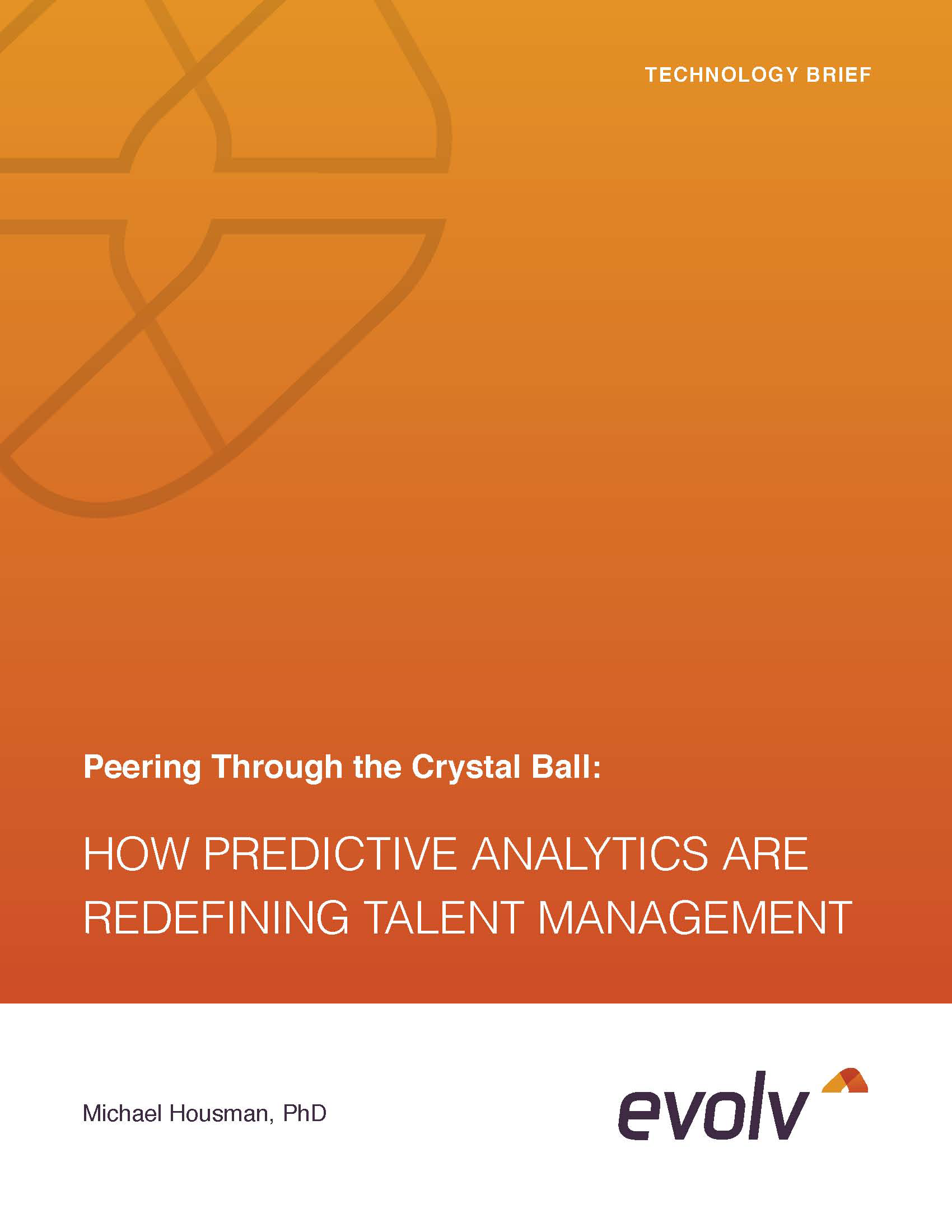Peering Through the Crystal Ball: How Predictive Analytics Are Redefining Talent Management

Introduction:
Talent management and planning for consumer companies with large frontline workforces is experiencing a massive transformation. Operations leaders and executives have traditionally had abundant access to business intelligence and reporting tools for accurate historical analysis. Now the growth of big data predictive analytics has enabled a new era for workforce optimization. Instead of relying on backwards looking tools and behaving in a reactive way, organizations now have the ability to be adaptive, anticipate problems, simulate the impact of adjustments, and course correct before it poses significant costs to the company.
What are predictive analytics?
Predictive analytics are a class of statistical models that allow users to anticipate what will occur in the future within their workforce. Through the use of “big data,” these models can be applied to very large datasets describing the workforce can accurately predict likely tenure and performance for months or even years down the line. Armed with this knowledge, large employers can make workforce decisions proactively saving time and cost
What do predictive analytics enable that couldn’t be done before?
To illustrate how predictive analytics work, let’s consider the following example. Economists are predicting unemployment rates will continue falling over the course of the next year. As a large employer, we want to know how this will impact us and what should we do. We have two options in this scenario:
- Wait and see if unemployment rates do continue to fall. If they do, attrition will rise as employees depart voluntarily, turnover will go up, and training / recruiting costs will eventually rise over time. This puts us on our heels and forces us to scramble to keep up with what has happened.
- Simulate the likely impact of lower unemployment rates and project out attrition rates over time. Then calculate whether it would be more cost effective to pay the additional expense in training / recruiting costs or, alternatively, raise wages in order to compensate and retain more employees. Put a plan in place, have budget allocated, and begin executing before the problem arises.
Here it’s obvious that a “wait and see” approach limits our options and locks us into a path that may be sub-optimal. When we use predictive analytics to plan in advance, we’re able to weigh out our different options and decide which one yields the best outcome. Not only does it reveal the knobs and levers that can be used to optimize the workforce but it also projects the likely outcome when someone turns those knobs and pulls those levers. Decision making around the workforce is enabled in an adaptive, proactive way rather than a reactive one.
Summary:
Right now, predictive analytics are already being applied in many Fortune 500 companies to optimize existing business processes such as credit fraud detection, evidence based medicine and display add marketing. It’s now only a matter of time before predictive analytics applications are a common competitive differentiator within any service-centric category reliant on front line workers to deliver competitively superiors service levels, sell more products, or improve the quality and volume of consumer-to-consumer referrals. The ability to see into the future and make adjustments ahead of changing business conditions is a powerful capability within a rapidly-changing economy. Eventually, backward-looking companies that are late to adopt will find it to be increasingly difficult to compete with their forward-looking competitors.
Click here to view the Technology Brief.
